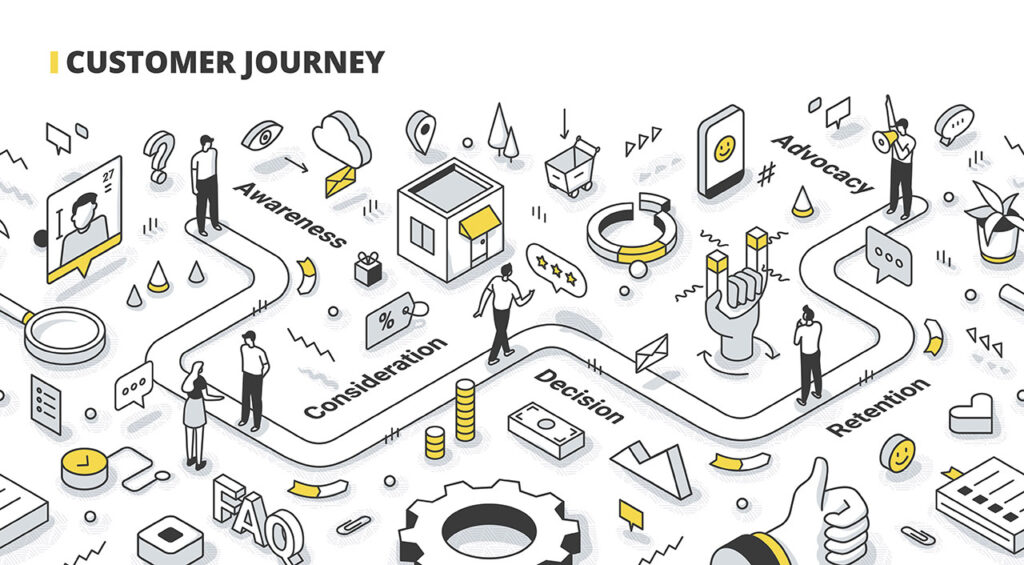Buyer journey: the path to purchase
The buyer journey describes the process that a potential customer goes through before making a purchase decision.
This process is typically divided into three phases:
Awareness:
In this phase, the customer first becomes aware of a problem or need that they want to solve.
They may not yet be focused on a specific solution or product.
The aim is to recognize the problem and explore initial solutions.
Consideration:
Here the customer begins to actively search for possible solutions.

He compares different options, checks providers and tries to find the best solution for his needs.
In this phase, the customer is already more focused on certain brands or products, but has not yet made a final decision.
Decision:
In the final phase, the customer has gathered enough information and is ready to make a purchase decision.
He selects the product or solution that best suits his needs and finally makes the purchase.
During the buyer journey, companies focus on targeting potential customers with relevant content, offers and information to guide them through each stage of the decision-making process.
Customer journey: the journey after the purchase
The customer journey is a broader term that describes the entire journey of a customer – from the first interaction with a brand to all post-purchase experiences.

It includes not only the phases of purchase, but also the customer experience while using the product or service, as well as retention and possibly the customer’s return for repeat purchases.
The customer journey can be divided into the following phases:
Awareness:
As in the buyer journey, the customer journey begins with awareness of a brand or product.
The customer becomes aware of the company, whether through advertising, recommendations or other marketing measures.
Consideration:
Here too, the customer compares possible providers and solutions.
In this phase, a closer relationship with the company is already established as the customer shows interest in the products or services.
Purchase:
The purchase decision is made and the customer acquires the product or service.

Use and experience (retention/engagement):
After the purchase, the customer uses the product or service and gains experience.
A good customer journey does not end with the purchase, but focuses on building a long-term relationship.
Customer loyalty and the creation of positive experiences are crucial here.
Loyalty:
In the loyalty phase, the customer has experienced the product so positively that they return to the brand or recommend it to others.
This is one of the most important phases for companies, as loyal customers not only ensure recurring revenue, but can also become valuable brand ambassadors.
Differences between buyer journey and customer journey
The main difference between the buyer journey and the customer journey lies in the perspective and the time span that is considered.
The buyer journey usually ends with the purchase, while the customer journey covers the entire lifecycle of a customer, including the time after the purchase.
While the buyer journey is mainly focused on the decision-making process of the potential buyer, the customer journey goes one step further and also includes customer retention and loyalty.
The buyer journey is often used by marketing departments to attract potential buyers and guide them through the decision-making process.
The customer journey, on the other hand, is often used by customer experience departments to maximize long-term customer satisfaction and loyalty.
Conclusion
The buyer journey and the customer journey are two key concepts in modern marketing, but they have different focuses.
While the buyer journey documents a customer’s path to purchase, the customer journey goes far beyond this and encompasses the entire customer relationship, from initial awareness to loyalty and repeat purchases.
Both journeys are crucial to the success of a company, as they enable a targeted and personalized approach and help to both acquire new customers and retain existing customers in the long term.
Companies should therefore keep an equal eye on both journeys and adapt their strategies accordingly in order to exert a positive and lasting influence on their customers both during the purchasing process and afterwards.





